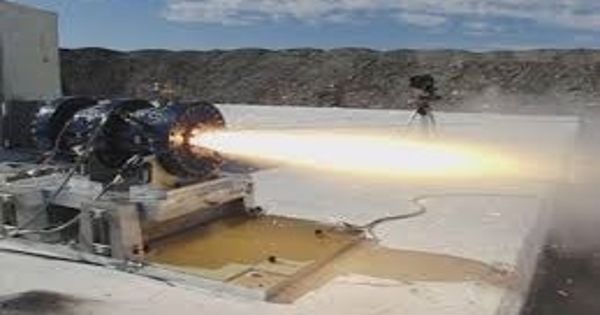Working Performance measurements of electric solid propellant
Electric solid propellants are advanced solid chemical rocket propellants that can be controlled (ignited, throttled, and extinguished) through the application and removal of an electric current. Electric solid propellants are being explored for use in dual-mode rocket engines because they aren’t susceptible to ignite from a spark or flame and can be turned on and off electrically. This behavior may enable the propellant to be used in multimode propulsion systems utilizing the ablative pulsed plasma thruster.
Researchers from the University of Illinois at Urbana-Champaign, Missouri University of Science and Technology, and NASA used a computer model that simulates the thermochemical properties of high-temperature materials to predict the thermochemistry of a new high-performance electric solid propellant. But because all of these applications require high heat, it’s important to understand how the high temperatures change the propellants’ chemistry.
“Learning about the amount of ablation can allow us to better assess how it might perform as a propellant in an electric rocket engine, and better assess its lifetime,” Rovey said.
“Electric solid propellants have been studied as chemical rocket propellants, but what we focused on is studying these types of propellants for electric propulsion systems – so, not the fire, smoke, and combustion you see in chemical rocket engines but for in-space electric pulsed plasma thrusters,” said Joshua Rovey, associate professor in the Department of Aerospace Engineering in The Grainger College of Engineering at the U of I.
How hot are we talking about? By way of an example, 12,000 degrees Kelvin is the temperature of the surface of a star. The model simulated temperatures from 500 to 40,000 degrees Kelvin. Rovey explained that in electric engines, there is a high-temperature plasma right next to the surface of the electric solid propellant. A small amount of that surface vaporizes and gets expelled out at high speeds. That’s called ablation.
At these high temperatures, the chemistry of the solid propellant changes. The conventional Teflon material is made up of two carbons and four fluorines that are bonded to each other. As it ablates, it comes off so hot that the molecules dissociate. The carbons and fluorines detach from each other. “Learning about the amount of ablation can allow us to better assess how it might perform as a propellant in an electric rocket engine, and better assess its lifetime,” Rovey said
The performance of an electric solid propellant operating in an electrothermal ablation-fed pulsed plasma thruster was investigated using an inverted pendulum micro-newton thrust stand. In the experiment, a high-performance electric propellant, manufactured by Digital Solid State Propulsion was compared with polytetrafluoroethylene, a traditional propellant used in ablative pulsed plasma thrusters. The propellant samples were measured before and after testing to determine how much of the propellant comes off of the surface with each electric pulse. The impulse bit and specific impulse of the device using the electric solid propellant were measured for short-duration test runs of 100 pulses and longer-duration runs to end-of-life, at energy levels of 5, 10, 15, and 20 J.
One primary take away from the study is that the high-performance electric propellant has a higher enthalpy – energy stored in the gas – at these extreme temperatures.
The results indicate that the electric solid propellant ablates about two times more than the traditional propellant and that the physics of the high-temperature ablation-fed arc discharge is similar for both propellants.
Rovey said the information from this work can be applied to other solid propellant applications, such as pyrotechnics or laser ablation.














